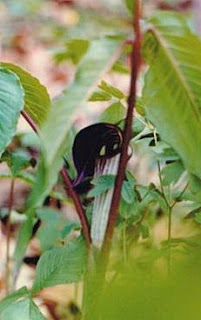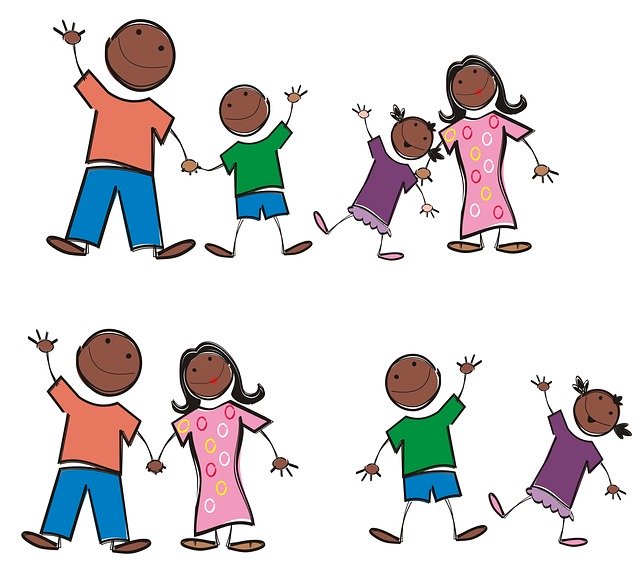A May Day Tribute – a Re-post
Today is May Day. In honor, I share this post again.

A May Day tradition begins.
Drop a pebble in the water . . .
It is spring, and the month of May is awaiting its curtain call. In Appalachia, sisters are walking home from school, carrying their books. It is 1968, after all, and backpacks have not yet arrived on the school scene.
The sixth and seventh-grade siblings are talking about their day at school when the younger of the two shifts her books in her arms and exclaims, “Guess what Miss Schrock told us about in school today!”
Within a few minutes, she has shared with her class the history of May Day. She tells them about the tradition in European countries where children gather wild flowers, put them in baskets, and slip the baskets onto the doorknobs of neighbors. They ring the doorbell, then run and hide.
Miss Schrock’s rendition of this tradition leaves such an impact that her enthusiasm becomes contagious in the younger sister as she relays the story.
“We could do that!” the older sister responds.
Just one splash, and it is gone . . .
The plan takes shape
Before they have completed their half-mile walk home down the dirt lane from the bus stop, they have formed a plan. That evening, they convince their oldest sister (who has a driver’s license) to take them to the woods along the Casselman River. There, in the woods and by the swamp along the banks of the river, they gather wild geraniums, dog tooth violets, wild phlox, tooth wort, ginseng, marsh marigolds, bluebells, jacks-in-the-pulpit, purple and white trilliums, and other flowers.

Before long, the flowers have been placed into paper cups and nourished with sugar water. After the sun has set, oldest sister drives them to their four-room school, where they ponder where to place their baskets. There is no handle on the doors where one can place the handles on their cups. So they put four baskets inside the door well of the basement entrance.
Future May Day plans
On the way home that evening from the first May basket delivery, the girls are making plans for next year – and the next – and the next. They have uncles, aunts, and elderly folks in the community who enjoy the beauty of nature but are no longer able to go to the woods. “We will bring the woods to them,” they say.
The excitement of the teachers upon finding the baskets when they arrive at school the next day as well as their attempt to find the culprits of this good deed validate the plan for future years. There is much discussion among the teachers, and students are asked if they know who brought the May baskets. The sisters don’t lie; they just shrug along with their classmates and don’t tell everything they know.
The school
Yoder School and its teachers are unique. A public school in Maryland’s most western county, the school has been funded to provide a place for Amish and Mennonite children to receive an education. Built by parents from the ground up and funded by county monies, the school is open to any student within the county.
With four classrooms of 25-30 students each, younger students learn as older grades recite and study out loud. Older students who are caught up with school work get to help younger students practice and learn.
Grades one and two are taught by Alvina Livengood, who heads up the unofficial drama department and gives free piano during recess as well as before and after school. Each spring, Alvina’s students receive credit for bringing wild flowers to school for identification. Baby food jars covered with contact paper and labeled are lined on top of bookcases and students place their flowers in the correct jar. 
Third and fourth grades are taught by Ruth E. Yoder. Her class treks to the woods each year to identify birds and listen to their different calls. For many years, Ruth hikes with her students the one-half mile to her farm. Her class watches as she and her husband decapitate and butcher a chicken.
Teaching fifth and sixth grade, Miss Ada Schrock excels in literature, writing, poetry and reading instruction. Miss Schrock teaches the arts to the upper grades while Esther E. Yoder, principal and seventh to ninth grade teacher teaches science and math in grades four and up.
Each teacher knows each student in the school by name. This is not just a school; it is a community.
The May day secret is out
When a Jack-in-the-pulpit appears in the May baskets, it doesn’t take Alvina long to figure out who gets the credit. Timothy Miller is the only child in her classroom who has brought a Jack-in-the-pulpit to school. Alvina knows where this flower can be found, so she asks Timothy who was with him when he found his Jack-in-the-pulpit.

Timothy tells her that his Miller cousins took him with them to the woods the evening before. Not uncommon to these Miller cousins are the woods where many wild flowers have been picked to take to school each spring.
Before the day is over, Alvina waltzes into the upper-grade classroom, stops at the desk of one of the Miller girls and whispers, “I know who brought the baskets.” Then she turns and walks out of the room. To the girls’ dismay, the secret is out; however, a tradition has been born.
But there’s a thousand little ripples . . .
More May day ripples
Who can guess how many years this tradition will continue? The following year, May baskets are delivered to many folks over a 15-mile radius. Initially, it is a family project. Year after year after year, their mama’s station wagon, used for delivering bread, is used on the evening of April 30 to gather wild flowers and then deliver some fifty-plus baskets to neighbors, relatives and acquaintances.
It is the one night of the year when a midnight bedtime is permitted on a school night. Left-over cookies at Christmas (yes) are kept frozen until they are needed to befriend farm dogs while delivering baskets down long, dark lanes. Ideals magazines are scoured to find the best phrases and poetry for this occasion. Folded 3 x 5 index cards with the words Happy May Day! on the front hold a verse on the inside. Verses are chosen carefully with each recipient in mind. Initially handwritten, the verses are later typed on a Remington until computers make the task easier.

Circling on and on and on . . .
Looking back
It has been 52 years since the day those sisters walked home from school, then decided to go to the woods and gather wild flowers for their teachers. Over the years, the assistance of others has been enlisted. Cousins, nieces, nephews, friends and youth groups have helped carry on the tradition.

Spreading, spreading from the center . . .
Like a pebble skipped across the water, the ripples of tradition continue on and on across the years.
Flowing on out to the sea . . .
Well over 2500 women, children (or men) have opened a kitchen door on May Day morning to find woodland flowers and the promise of spring.
And there’s no way of telling where the end is going to be.
Former students or their children have delivered May Baskets to retired teachers who relocated to Indiana. Nate Yoder (later a professor at EMU) shared visits with Ruth E. Yoder when he brought May baskets to her. Elissa Riegsecker (daughter of Alice who lived in Indiana) delivered baskets to former teacher Ruth E. Yoder and teacher/principal Esther E. Yoder. Alvina Livengood and Ada Schrock, who live locally, received their 46th basket in 2013.
The Miller six
The People Behind the Tradition
The simple telling of this European tradition was the catalyst behind the May baskets. Ada Schrock shared it with her students on April 30, 1968. Miss Schrock’s enthusiasm was so infectious that Rachel Miller, the youngest of the Miller Six, shared the story with her sister Gertrude on another ordinary walk home from an ordinary day at school. Ida Marie drove the station wagon and took them to the woods that evening. The following year, all six of Fannie’s girls traipsed to the woods, bringing back buckets and tubs of wild flowers.
Traditionally, Ida Marie drove the station wagon while Loretta sat in the back, choosing each basket with the verse for the individual to whom it would be given. Each basket carefully received an extra dose of sugar water just before it delivery took place. Rhoda, Alice, Gertrude and Rachel were runners, usually going two at a time when there was a long lane with farm dogs. The dogs were fed stale Christmas cookies to be kept quiet. One girl delivered the basket while the other stood away from the house, petting and feeding cookies to friendly guard dogs. Sometimes two girls were dropped off at one farm lane while two others delivered baskets down the road on the next farm.
Passing it On
This spring, when you wonder if the little things you do make a difference, remember this story. If you know Ada Schrock, call her and thank her. She can no longer see, but she can hear. She will treasure your call. (The last four numbers of her phone are 2350.)
It is May, and we celebrate spring. Rivers, creeks, and brooks are filled from spring rains.
Go ahead. Toss your pebble in the water and watch the ripples spread out to the edges of the banks. You never know how far the ripples will go.
Go ahead and share a story or a tradition or a lesson learned. Toss your pebble – make that splash. The ripples will continue, long after you are gone.
Go ahead. This spring, celebrate life and who you are.
Begin a tradition. Leave a legacy.
And a Happy May Day to you, too!

Note from the author:
Yoder School* was in operation from 1891-1989.
Ruth E. Yoder and Esther E. Yoder passed away several years ago.
Nate Yoder passed away in April of this year.
Ada Schrock, now in her 90s, lives with her sister in a quiet town near Yoder School.
Alvina Livengood, also in her 90s, lives in a retirement community almost within sight of Yoder School.
Drop a Pebble in the Water
Drop a pebble in the water:
Just a splash, and it is gone;
But there’s half-a-hundred ripples
Circling on and on and on,
Spreading, spreading from the center,
Flowing on out to the sea.
And there is no way of telling
Where the end is going to be.
Drop a pebble in the water:
In a minute you forget,
But there’s little waves a-flowing,
And there’s ripples circling yet,
And those little waves a-flowing
To a great big wave have grown;
You’ve disturbed a mighty river
Just by dropping in a stone.
Drop an unkind word, or careless:
In a minute it is gone;
But there’s half-a-hundred ripples
Circling on and on and on.
They keep spreading, spreading, spreading
From the center as they go,
And there is no way to stop them,
Once you’ve started them to flow.
Drop an unkind word, or careless:
In a minute you forget;
But there’s little waves a-flowing,
And there’s ripples circling yet,
And perhaps in some sad heart
A mighty wave of tears you’ve stirred,
And disturbed a life was happy
Ere you dropped that unkind word.
Drop a word of cheer and kindness:
Just a flash and it is gone;
But there’s half-a-hundred ripples
Circling on and on and on,
Bearing hope and joy and comfort
On each splashing, dashing wave
Till you wouldn’t believe the volume
Of the one kind word you gave.
Drop a word of cheer and kindness:
In a minute you forget;
But there’s gladness still a-swelling,
And there’s joy a-circling yet,
And you’ve rolled a wave of comfort
Whose sweet music can be heard
Over miles and miles of water
Just by dropping one kind word.
by James W. Foley









